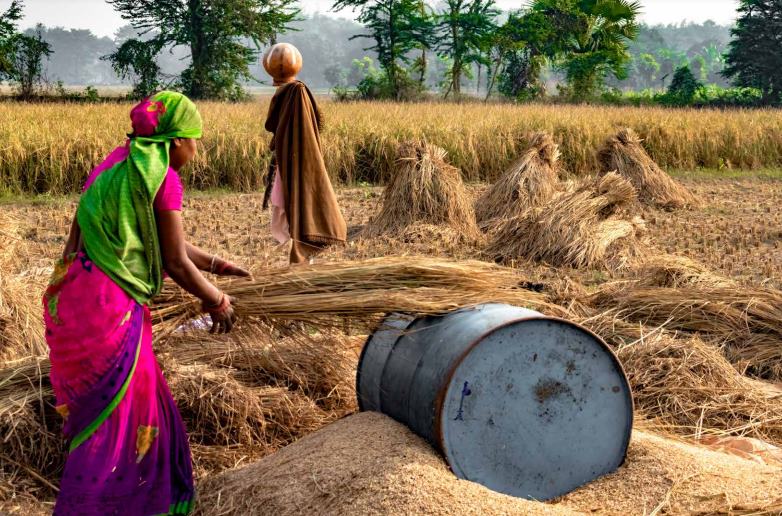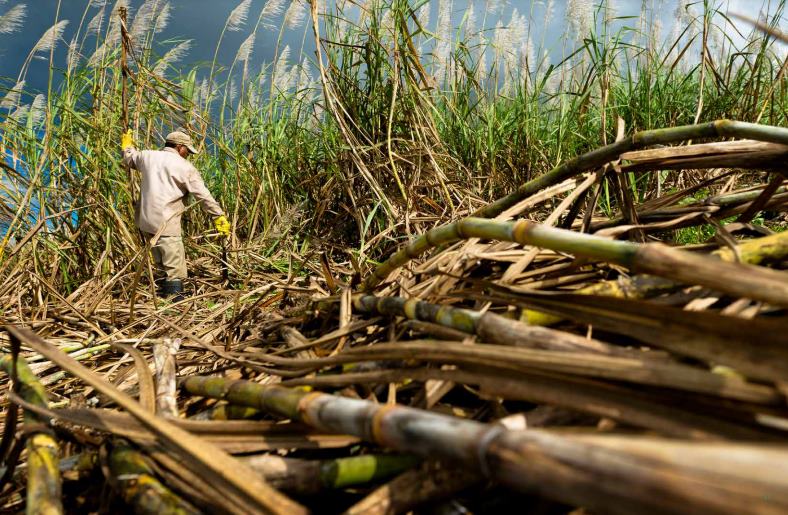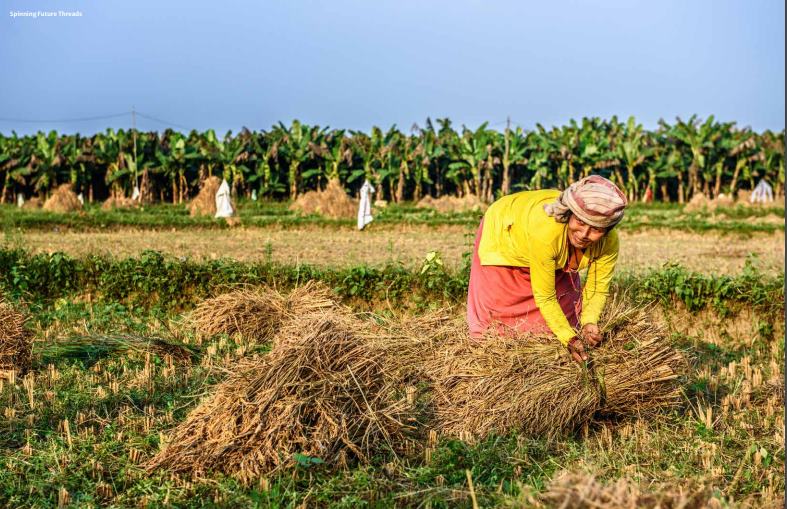Study explores agro-residue’s potential in creating alternative, eco-friendly textile fibre — farmers expected to benefit
A study highlighted that agricultural waste can reap triple benefits of sustainable fashion, improved rural livelihoods and reduced environmental impact. The research also provides a roadmap to create sustainable fibre value chains.


This move is expected to boost farmers' income. All photos: Spinning Future Threads report
Rice straw, banana stems and other agricultural waste could soon be utilised for producing eco-friendly products such as textile fibres in a move that could provide the triple benefits of increased farmers’ incomes, sustainable fashion and a reduced detrimental impact on the environment.
A new report titled ‘Spinning Future Threads: The Potential of Agricultural Residues as Textile Fibre Feedstock’ published yesterday on July 6, mentions that the innovation also offers an opportunity to lessen the instances of extensive crop burning and its associated negative environmental impacts such as the increased levels of air pollution during the rice harvest around the national capital region (NCR) in India.
“Activating this value chain offers great potential to: decrease extensive cropburning and its associated negative environmental and climate impacts; generate new, additive low-cost revenue streams for low-income agricultural communities in South and Southeast Asia; and, activate a new, scalable and more environmentally sustainable source of fibre for the booming apparel and fashion industry,” reads the report.
Also Read: Rural women in Uttar Pradesh spin a banana yarn and earn themselves economic independence
The research was conducted by the Institute for Sustainable Communities (ISC) — a nonprofit working for community-based solutions to reducing climate pollution in the United States and China; the World Resources Institute (WRI) India — a non profit working to protect nature; and Wageningen University and Research — a public university based in the Netherlands, a public university focussing on agricultural research. It was funded by Laudes Foundation — an independent foundation providing its partners with philanthropic capital.
The study found large quantities of agricultural residue in eight countries in South and Southeast Asia, including India, Bangladesh, Pakistan. These countries are claimed to have abundant biomass resources (especially agro-residues), large textile manufacturing output, and status as current and future global economic growth centers.

Triple benefits
“Agro-residue based fibres are promising innovations that could unlock the next fashion revolution,” Vivek P Adhia, India country director, Institute for Sustainable Communities, was quoted in the press statement issued by the non-profits.
“Time has come, reaping triple benefits of sustainable fashion, improved rural livelihoods and reduced environmental impacts. Building critical links between industry and farming communities will help facilitate this transition more quickly,” he added.
For this, it is important to design the system right, upfront, addressing considerations on reliable feedstock availability, robust local value chains, customizing technology fit-for-purpose and advancing consumer awareness, he suggested.

Also Read: Baoris, Bijli Swaraj and Biomass Plants: How the states are responding to climate change
The report highlighted that in addition to economic benefits, recycling residue into textile fibers would have important climate benefits. “Achieving climate resilience requires innovative social and environmental solutions, as well as enabling government policies,” said A Nambi Appadurai, director, Climate Resilience Practice, WRI India.
“The conversion of agricultural residues as feedstock to the textile industry is a step in the right direction. But moving forward, we must also build on the lessons learnt from our past experiences and ensure that the solutions empower farmers and support their livelihoods, simultaneously,” Appadurai added.

Need for the innovation
The study highlighted that the global fibre production has reached over 100 million tonne per year in 2019 and is expected to rise even further. It warned that by 2050 the textile industry will have consumed 300 million tonnes of nonrenewable inputs, unless immediate action is taken.
The researchers suggested agricultural residues can potentially be blended with man-made and natural fibres to produce innovative materials called agro-residue based textile fibers. “These fibers are known to have similar characteristics to existing materials in the fashion industry,” read the press statement.
The innovation, as claimed in the press statement, is a promising opportunity to create value out of waste around the world.
Also Read: Reviving degraded farmlands in Karnataka’s Bandipur through agroforestry
Four recommendations
The report offers specific recommendations and a roadmap for collaboration between the fashion and food industries to set this innovative solution in motion.

Firstly, it suggested investing in further targeted study. Secondly, it recommended geographical and spatial considerations – where to focus and why.
Thirdly, it suggested this innovation will benefit from a more distributed processing model than investing in individual efforts. Lastly, the report also recommended engaging stakeholders and becoming an effective industry that provides high quality products and services.

